S A L M O N O N T H E S K E E N A
| |||||||||||||||
| Home Page | Introduction | 7000 BC - 1790 AD | 1790 AD - 1920 AD | Credits/Contact Us | |||||||||||

|
|
|
The first settlement of Europeans on Tsimshian territory occurred in 1834 when the chief of the Gispaxlo'ots tribe invited the Hudson's Bay Company to build their fort at Laxhlgu'alaams, just north of the mouth of the Skeena. From the outset, the HBC depended on the Tsimshian for most of their food and exchanged trade goods for hundreds of bundles of dried salmon annually, well into the middle of the century.
|

|
The Tsimshian continued to travel to their summer fishing villages where they not only harvested their winter supply of salmon but also fished for the canneries. The two villages pictured here were in the territory of the Kitkatla tribe, south of the mouth of the Skeena River, the first one on Banks Island, the other at Lowe Inlet.
|
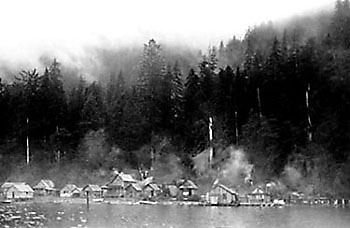
|
The situation that developed in 1890 at Lowe Inlet illustrates what began to take place on the ground as the canneries became larger and developed their own fishing fleets. |
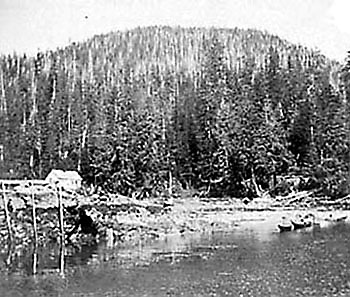
|
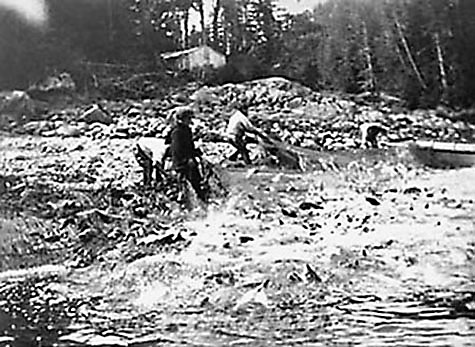
|
Fisheries Guardian M.K. Morrison reported that the Kitkatla tribe of the Tsimshian were threatening to cut cannery boat nets at Lowe Inlet if they persisted in fishing. Chief Seeks (Shakes) had told Morrison:
|
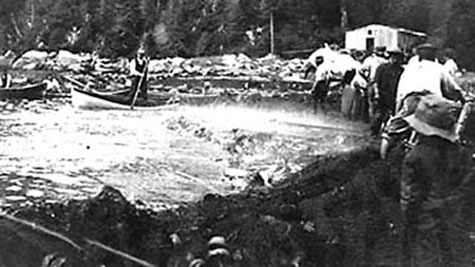
|
Morrison also reported that Kitkatla on Banks Island had threatened to shoot anybody who lowered a net into their waters. Not wanting to provoke further a violent confrontation, the Lowe's Inlet Canning Company purchased fish directly from Native fishers, in doing so paying more then it would have paid employees to catch the fish, and shipped 6000 cases of salmon. The canneries wanted greater control over the resource however, and the Ministry of Fisheries began efforts to legislate aboriginal title out of existence. |
|
|
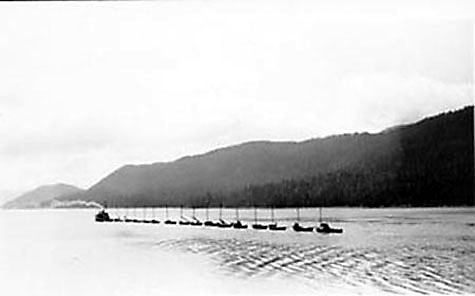
|
As the canneries grew in size and importance in the new BC economy, they also became an integral part of the Tsimshian and Gitksan economy. While the Tsimshian and Gitksan continued to sell fish from their fishing sites, some also worked in the canneries' gillnet fishing fleets. The fishermen were towed out to fishing grounds in skiffs, 18' to 26' long equipped with oars and a sprit sail, where they remained fishing for 5 days. Walter Wicks, a newcomer to the coast who lived and worked with the Tsimshian, described his memories. |
| "The boats were manned by two men, one casting the net over the stern while the other rowed until the full two hundred fathoms of net was laid out on the water. When it came time to pick up, the man rowing would back the boat toward the net, while his partner hauled in.. Often in stormy weather or thick fog, when the tugs would be unable to find us, we would row or sail for shelter to some anchorage. At the age of thirteen I have pulled a heavily loaded fish boat for nine hours in the night." |
|
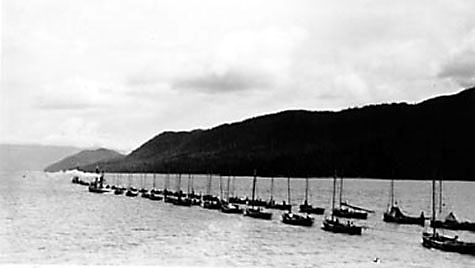
|
 |